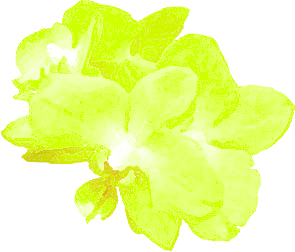After Repotting Oncidium Orchids into Hydroponics - What to Look For
Oncidium orchids usually adapt to hydroponics without incident. Plants with healthy roots transfer easily. If your plant had damaged roots however, a little "tender loving care" might be needed.
What to Look for After Repotting Oncidium Orchids
Unlike many other orchid types, healthy Oncidiums can be heavy drinkers after repotting. The LECA pebbles in our system seem to be the perfect media for their rather thin roots. As moisture is "pulled up" from the bottom by the LECA pebbles, fresh air circulates around the roots.
The perfect environment for new root growth!
|
Water: |
For the first couple of weeks, use care when watering new transplants. Oncidiums (like most orchids) need a dry period between waterings.
Active transplants should use all the water in 2 weeks. If your plant still has water at the base after 2 weeks, dump out the water and force a "dry period" of a week or so before rewatering. New roots need air! | ||||
|
Light: |
Oncidiums like a lot of light but avoid direct sun the first couple of weeks. | ||||
|
Temperature: |
Even though oncidiums like cool temperatures, it's a good idea to keep the root zone warm for the first couple of weeks after transplanting. (Heat mats are good for this.) |
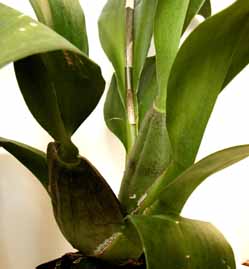 Psuedobulbs on a healthy Oncidium orchid Psuedobulbs on a healthy Oncidium orchid |
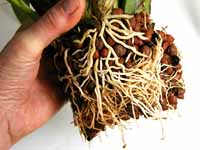 Healthy Oncidium roots are almost white in color and have a supple texture. Healthy Oncidium roots are almost white in color and have a supple texture. |
After Repotting - Possible Trouble
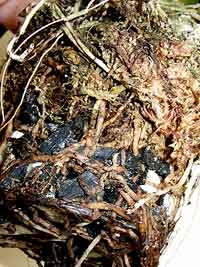
If you found rotted and mushy roots when transplanting, your plant wasn't happy in its old pot. The roots where suffocating as the potting materials decomposed. This potting mix did not drain well and the roots where too wet.
In this case, your new transplant is going to need a little "TLC". See watering instructions below.
Another common sign of trouble is "wrinkled" pseudo bulbs. Psuedo bulbs are thick, fleshy growth at the base of the plant that act as storage tanks, saving water for the plant to use during dry spells.(Psuedo bulbs are most common on oncidiums and cattleya.) Wrinkled or wilted psuedo bulbs means your plant's root system isn't absorbing moisture and sending it up to the plant.
The image below shows the difference correct watering can make (easy with hydroponics!). The plant on the left has a dehydrated pseudo bulb. The root system just wasn't delivering moisture to the plant. The plant in the back on the right has active roots, delivering moisture and nutrients to the plant. See the difference?
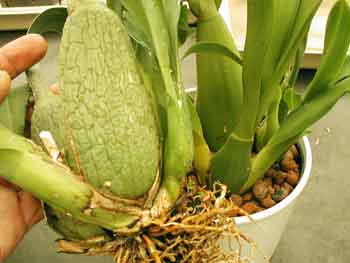
Watering Troubled Oncidiums
Wilted plant! Your first instinct is to add more water. Stop! That's exactly the wrong response! Too much water and your plant will suffocate.
Growing new, healthy roots is job #1 and this requires an even balance of water and air in the grow pot.
- Using water gauge as a handle, lift inner pot (and plant) from outer pot.
- Take plant to sink and pour a generous portion of KLN Rooting Solution through the pebbles.
- Return plant to outer pot with no standing water at the base.
- Repeat 1-2 times per week until new growth appears.
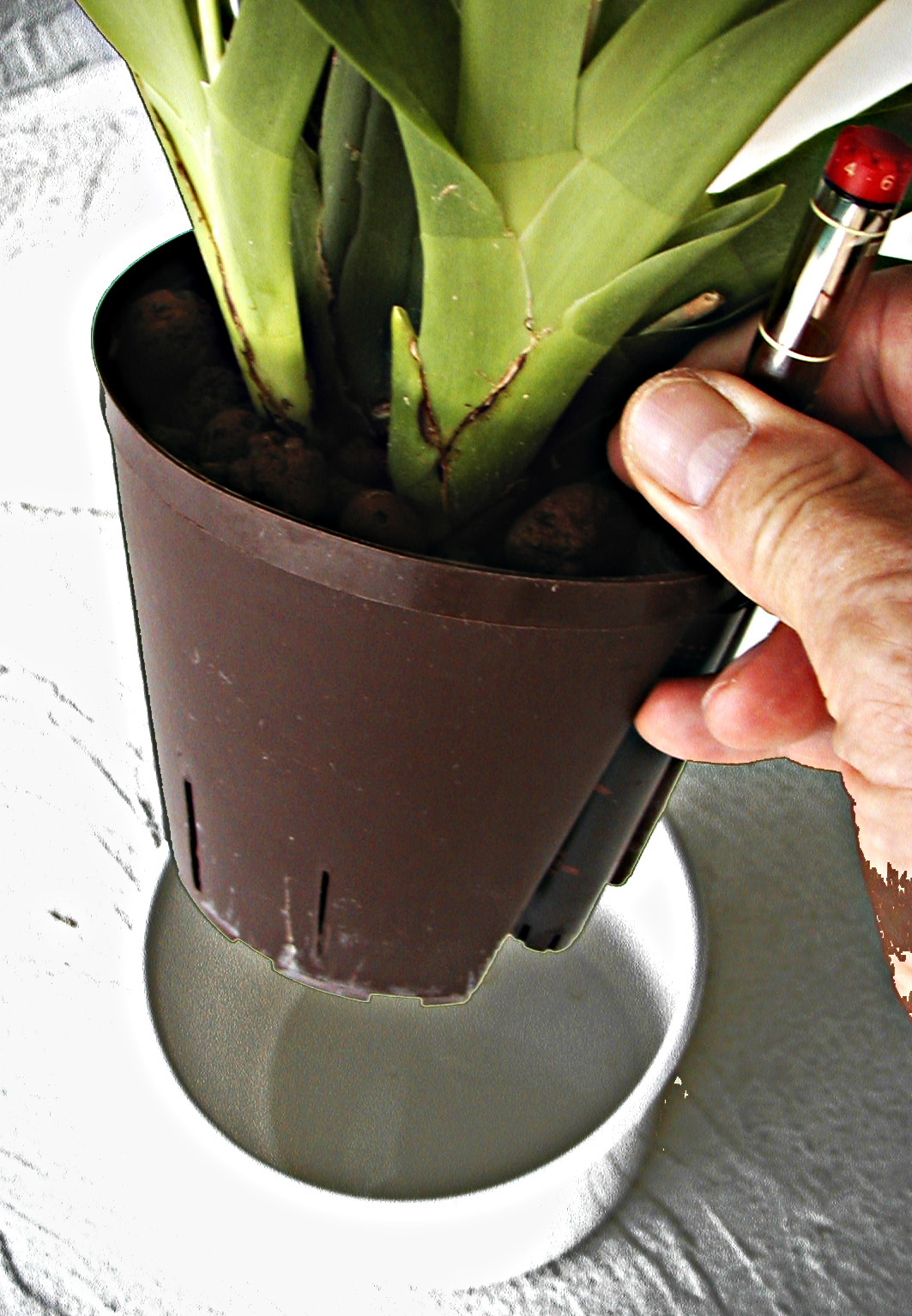 lift inner pot from outer pot lift inner pot from outer pot |
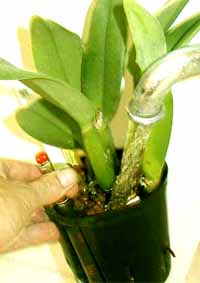 watering at sink watering at sink |
Older psuedobulbs never fully recover. Watch for new growth at the base of the plant. New shoots will sprout up at the bottom of the old pseudo bulbs.
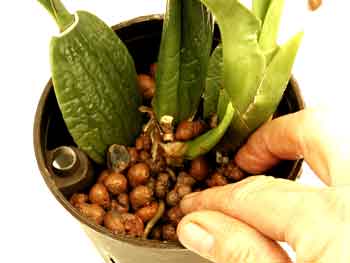
When you see new growth, start watering to 1/4 - 1/2 on gauge. Your new transplant actively growing and should use up all the water in 2 weeks (lift the inner pot to check bottom for moisture). If not, cut back on water because we want everything to dry out between waterings.




